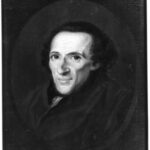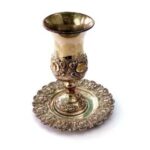(I recently taught a Bible study covering the book the Acts of the Apostles. I used my mother’s Ryrie Study Bible to provide the basic outline of the Bible study.)
This chapter tells the story of the healing of the lame man. Verses 1-11 describe the miracle; verses 12-26 gives Peter’s second recorded sermon or message.
Read Acts 3:1. The early believers were mostly Jews and still kept the pattern of Jewish traditional worship: prayers in the temple at 9am, 3pm (or the ninth hour), and sunset. Though the early church is in the process of developing a new style of worship, with the house churches as we saw described in the previous chapter, she has not yet completely separated herself from traditional Judaism.
Peter and John, we will see, become the pillars of the early Church. They were particularly close to Jesus (more so, perhaps than some of the other apostles). It is Peter and John (along with John’s brother James) who are present during the Transfiguration. Read Mark 9:2-4. Since they had the closer relationship with Jesus, it makes sense that they become important leaders.
Read Acts 3:2. “the temple gate called Beautiful” They believe this was probably the Nicanor Gate, which connects the Court of Women with the Court of Israel. (I’ll talk about what these courts were in a little while.) This gate was named after a rich Alexandrian Jew named Nicanor, who had donated the magnificent bronze doors for the gate. { Show temple diagram from “Great Events of Bible Times”, page 155 } There is actually some debate about whether the Nicanor gate was between the Court of the Gentiles into the Court of the Women or the Court of the Women into the Court of Israel.
Re-read Acts 3:2. Notice that the lame man had to be carried – probably by friends or family. The man’s entire existence was centered on sitting by the Beautiful gate, begging for money. This was what he did every day, so many people, particularly the Jewish men that went into the temple three times a day to pray, would have seen and recognized him. Sitting somewhere in the temple courts to beg makes very practical sense, since one would expect that men going in to pray would be more likely to feel compassion on a beggar.
Read Acts 3:3-5. Why does the scripture bother to say that Peter and John looked at the man? I think this is because most people probably either walked by the man without really seeing him or absent-mindedly gave him money, because that’s what good Jews did for beggars. But no one had ever really looked at him and seen him as a real person, someone of value. And why did Peter tell the lame man to “look at us?” For probably a similar reason: the lame man only saw those going in and out as means to an end, as a way to get the necessary funds to eat and survive another day. Peter wanted the lame man to see Peter and John as real people, too; people who cared about him. But the lame man, of course, just looked and saw two people who, he hoped, would give him money.
Read Acts 3:6. Notice that Peter calls on the name and authority of Jesus Christ to heal the man. He can do nothing without the power given him through Christ. Also note that he gives the man a command: walk!
Read Acts 3:7. For this verse, I think that the English translation is important. In the NIV it says Peter “helped” the man up, therefore implying that the man was trying to rise on his own, but needed help. The New American Standard, however, says “he raised him up”, which implies that the lame man was not involved, and that Peter pulled him up.
Why is this important? The question, in my mind is, did the lame man have the faith to believe that he could be healed or was the healing done completely on the basis of the apostles’ faith? I’ve looked at a couple different translations of this verse and in later verses in this chapter and it seems that it could be read either way.
Which ever the case, it is pretty obvious by how the formerly lame man reacts that he certainly has faith after the healing! Read Acts 3:8. It says that he went with Peter and John into the temple courts. This most likely means they moved into the Courts of Israel. { Show temple diagram from “Great Events of Bible Times”, page 155 } You can just imagine the spectacle this man made jumping around and praising God, most likely in a loud voice! I’m guessing that he was quite loud because of how the people around them reacted. Perhaps he even ran up to people and grabbed them in his excitement and yelled “I’m healed, I’m healed! Praise God, I’m healed!”
Read Acts 3:9-10. The beggar was well known for sitting by the Beautiful Gate; he was a fixture. He had probably been sitting begging there for literally years, so many of the Jewish men in the temple courts would have recognized him. They would have also known that his being able to walk and leap about would have to be a miracle; he could not have been faking being lame all these years. When the men in the Court of Israel saw and realized what had happened, the story would have spread like wildfire to the Women’s Court, then out into the Court of the Gentiles.
Read Acts 3:11. Notice how the beggar hangs on to Peter and John! He doesn’t want to lose these men, now that he has been healed. I think that tells us something of his hunger for spiritual matters. He probably would have heard something of Jesus Christ and knew that these men could tell him more about this person whose name had healed him. The next place we have mentioned in this story is “Solomon’s Colonnade.” This is also called “Solomon’s Porch” or “Solomon’s Portico.” This was the outer corridor of the temple on the eastern side of the temple; this consisted of two rows of pillars that form corridors or porticos. { Show temple diagram from “Great Events of Bible Times”, page 155 }
Apparently as the news of the man’s healing spread throughout the temple complex, people would have come out from the Courts of Israel and the Women to the colonnade, while others, in the Court of the Gentiles, would have congregated here. Peter and John would have seen were the crowd was growing and gone out to speak to the people.
To be continued…
Sources
Philip Yancey and Tim Stafford (notes). The Student Bible. NIV Version
Editors. Great Events of Bible Times




